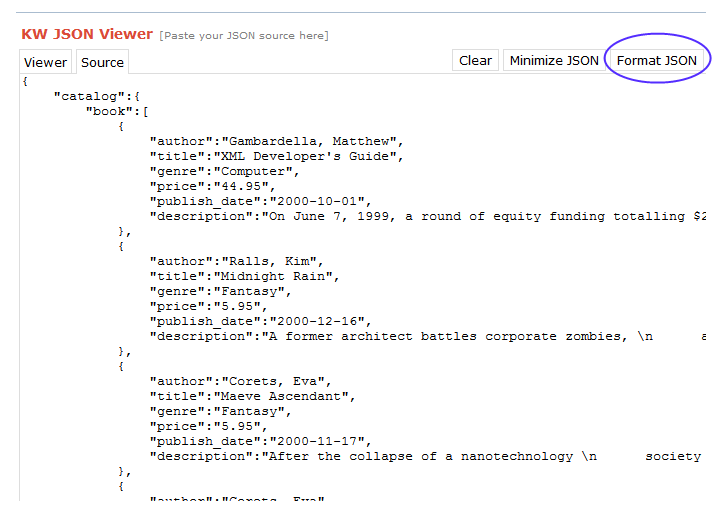

- JSON EDITOR FORMATTER HOW TO
- JSON EDITOR FORMATTER INSTALL
- JSON EDITOR FORMATTER UPDATE
- JSON EDITOR FORMATTER CODE
See the "Typeahead Autocomplete" and "Typeahead Autoprefill" examples for an example of usage. includeCSS() - Includes a custom JavaScript file.įor these to be recognized, they MUST be place inside a // comment tag.includeJS() - Includes a custom JavaScript file.Two special comment functions are available in the JavaScript editor for creating more complex setups.
JSON EDITOR FORMATTER CODE
You can add custom JavaScript code above and below the mandatory (readonly) lines. In the JavaScript editor, the instance of the form is available in the variable jseditor and the schema and startval (if present) are available in the variable jedataĪlso the global instance of the JSON-Editor is available in the variable JSONEditor

JSON EDITOR FORMATTER UPDATE
(Only available if the editor is instantiated using the variable jseditor)Ĭhanging the output values will update the field values in the form. Output - The output and validation results from the form.The form is created in an IFrame, isolated from the rest of the page. Form - The form generated from the schema.Here you can try various predefined examples or create your own schema and JavaScript test setups. However, these methods are usually fine for a single run or one-off need.The JSON-Editor Interactive Playground is a page where you can test various setups for the OpenSource JSON Schema parser JSON-Editor There are multiple plugins available for developers. If you are going to use this often I suggest you do some research. There are multiple methods available for people looking to format json in vim. To format json in vim using python simply open the file and give the :%!python -m json.tool command.
JSON EDITOR FORMATTER INSTALL
Therefore there is no need to install additional packages. Python comes preinstalled on most Linux distributions. If you are more comfortable with Python this is a good option for you. to format it into a human readable form.īelow we have formatted the command in the jq example for clarity. Once you have it installed, simply open your json file in vim and use :%!jq. NOTE: For Red Hat/CentOS systems you may need to enable the epel repository first.Īlternatively, you can install it as a snap from the Snap Store.
JSON EDITOR FORMATTER HOW TO
Below are examples of how to install it on most popular Linux distributions. You can install the jq program with your systems package manager. The output(s) of the filter are written to standard out, again as a sequence of whitespace-separated JSON data. The input to jq is parsed as a sequence of whitespace-separated JSON values which are passed through the provided filter one at a time. The jq program is a filter that takes input and produces and output. In this Linux quick tip we will be discussing how to format a json object in vim. With an abundance pf plugins and the ability to use external programs to further expand it's capability, there seemingly unlimited potential. In the early nineties vim (vi improved) was released as a clone for vi with additional improvements. It is still the most widely used text editor on UNIX/Linux systems. The vi editor has been around since the mid 1970's.


 0 kommentar(er)
0 kommentar(er)
